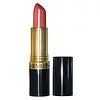What's inside
What's inside
 Key Ingredients
Key Ingredients

 Benefits
Benefits

 Concerns
Concerns

 Ingredients Side-by-side
Ingredients Side-by-side

Polybutene
Diisopropyl Dimer Dilinoleate
EmollientEthylhexyl Palmitate
EmollientTridecyl Trimellitate
EmollientPolyethylene
AbrasiveCalcium Sodium Borosilicate
Crambe Abyssinica Seed Oil
Skin ConditioningPersea Gratissima Oil
Skin ConditioningPhospholipids
Skin ConditioningSodium Chondroitin Sulfate
Skin ConditioningAtelocollagen
Skin ConditioningHyaluronic Acid
HumectantTocopherol
AntioxidantBeeswax
Emulsion StabilisingAluminum Calcium Sodium Silicate
Silica
AbrasiveSynthetic Fluorphlogopite
Benzoic Acid
MaskingParfum
MaskingBHT
AntioxidantPolybutene, Diisopropyl Dimer Dilinoleate, Ethylhexyl Palmitate, Tridecyl Trimellitate, Polyethylene, Calcium Sodium Borosilicate, Crambe Abyssinica Seed Oil, Persea Gratissima Oil, Phospholipids, Sodium Chondroitin Sulfate, Atelocollagen, Hyaluronic Acid, Tocopherol, Beeswax, Aluminum Calcium Sodium Silicate, Silica, Synthetic Fluorphlogopite, Benzoic Acid, Parfum, BHT
Trioctyldodecyl Citrate
EmollientOzokerite
Emulsion StabilisingPolybutene
Ethylhexyl Palmitate
EmollientOctyldodecyl Neopentanoate
EmollientPentaerythrityl Tetraisostearate
EmollientC10-30 Cholesterol/Lanosterol Esters
EmulsifyingBis-Diglyceryl Polyacyladipate-2
EmollientCera Microcristallina
Emulsion StabilisingCaprylic/Capric/Stearic Triglyceride
Skin ConditioningBeeswax
Emulsion StabilisingSilica
AbrasiveSynthetic Wax
AbrasiveTocopheryl Acetate
AntioxidantAscorbyl Palmitate
AntioxidantAloe Barbadensis Leaf Extract
EmollientSerica
HumectantPentaerythrityl Tetraethylhexanoate
EmollientCaprylyl Glycol
Emollient1,2-Hexanediol
Skin ConditioningMica
Cosmetic ColorantCI 77891
Cosmetic ColorantIron Oxides
CI 17200
Cosmetic ColorantCI 19140
Cosmetic ColorantCI 15985
Cosmetic ColorantCI 42090
Cosmetic ColorantCI 15850
Cosmetic ColorantCI 45410
Cosmetic ColorantCI 77163
Cosmetic ColorantCI 75470
Cosmetic ColorantTrioctyldodecyl Citrate, Ozokerite, Polybutene, Ethylhexyl Palmitate, Octyldodecyl Neopentanoate, Pentaerythrityl Tetraisostearate, C10-30 Cholesterol/Lanosterol Esters, Bis-Diglyceryl Polyacyladipate-2, Cera Microcristallina, Caprylic/Capric/Stearic Triglyceride, Beeswax, Silica, Synthetic Wax, Tocopheryl Acetate, Ascorbyl Palmitate, Aloe Barbadensis Leaf Extract, Serica, Pentaerythrityl Tetraethylhexanoate, Caprylyl Glycol, 1,2-Hexanediol, Mica, CI 77891, Iron Oxides, CI 17200, CI 19140, CI 15985, CI 42090, CI 15850, CI 45410, CI 77163, CI 75470
 Reviews
Reviews

Ingredients Explained
These ingredients are found in both products.
Ingredients higher up in an ingredient list are typically present in a larger amount.
Beeswax is natural wax produced by honey bees and can be synthetically created. It consists mainly of fatty acid esters and long-chain alcohols.
In cosmetics, beeswax is a emollient. Due to its waxy structure, it creates a protective barrier. This barrier prevents water from evaporating off the skin.
This may not be a good ingredient for oily skin. We recommend speaking with a professional if you have concerns.
Beeswax cannot be removed with water, but can be taken off with an oil cleanser.
Beeswax is also antiseptic and contains vitamin A.
Learn more about BeeswaxEthylhexyl Palmitate, also known as octyl palmitate, is created from 2-ethylhexyl alcohol and palmitic acid. It is a fatty acid ester.
The fatty acid content of Ethylhexyl Palmitate makes it an emollient. Emollients help soften and hydrate your skin by trapping moisture within.
Ethylhexyl Palmitate is also used to help improve the texture of cosmetics. It helps other ingredient dissolve in products and help disperse ingredients more evenly.
You'll likely find this ingredient in sunscreen, as it is often used to mix UV-blocking ingredients such as avobenzone and ethylhexyl triazone.
It can also help stabilize the fragrances in a product as a fragrance fixative.
Ethylhexyl Palmitate can be used to substitute mineral oil.
Due to its high fatty acid content, it may not be fungal-acne safe.
Learn more about Ethylhexyl PalmitatePolybutene is used to help control the viscosity of a product. This just means it helps adjusts the texture.
It is a polymer and does not get absorbed into the skin due to its large size.
Studies found this ingredient did not irritate skin in concentrations below 15%.
Learn more about PolybuteneSilica, also known as silicon dioxide, is a naturally occurring mineral. It is used as a fine, spherical, and porous powder in cosmetics.
Though it has exfoliant properties, the function of silica varies depending on the product.
The unique structure of silica enhances the spreadability and adds smoothness, making it a great texture enhancer.
It is also used as an active carrier, emulsifier, and mattifier due to its ability to absorb excess oil.
In some products, tiny microneedles called spicules are made from silica or hydrolyzed sponge. When you rub them in, they lightly polish away dead skin layers and enhance the penetration of active ingredients.
Learn more about Silica